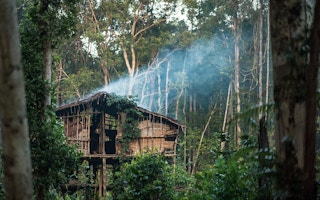The forests and seas of Southeast Asia, if protected, could help generate jobs and money while mitigating climate change, bringing an overall benefit of at least US$2.19 trillion a year — some two-thirds the region’s annual gross domestic product (GDP).
To continue reading, subscribe to Eco‑Business.
There's something for everyone. We offer a range of subscription plans.
- Access our stories and receive our Insights Weekly newsletter with the free EB Member plan.
- Unlock unlimited access to our content and archive with EB Circle.
- Publish your content with EB Premium.
All that could be possible if the region spent US$10 billion a year today — or only about half a percent of the projected returns — to address conservation gaps, though spending must rise to US$46 billion by 2030, according to a study published Wednesday.
Commissioned by environment group Campaign For Nature, the study was conducted by the Academy of Sciences Malaysia, a government office. It was published a week ahead of technical meetings with country representatives at the United Nations over a proposal to protect 30 per cent of Earth’s land and sea by 2030.
At the launch of the report, its author, Dr Helen Nair, a Academy of Sciences Malaysia fellow, said: “Mankind can no longer afford to recklessly over exploit the planet’s resources, especially its biodiversity.”
The study relied on a 2018 report by non-profit WWF that said protected ecosystems were worth US$125 trillion globally, through supplying food, water, clean air and tradable products. The US$2.19 trillion figure was derived by dividing US$125 trillion by about 57, the proportion of protected land and sea area in Southeast Asia.
Dr Teckwyn Lim, an adjunct lecturer at the University of Nottingham Malaysia who was not involved in the report, said the simple calculations were fine as a general indication to the value of nature in Southeast Asia, but not anything more granular.
“There needs to be a country-by-country approach, in order for it to be more actionable,” Lim said.
“The countries are very different from one another; they range from Laos to Singapore.”
By the Malaysia study’s calculations, Indonesia, with its huge swaths of protected forests and marine areas, stood to gain US$1 trillion yearly alone — close to its total 2020 gross domestic product (GDP).
Small and industrial Singapore would only get about US$82 million, or 0.02 per cent of its GDP, though report author Pervaiz Ahmed said the city-state could help with innovation and benefit through green finance and carbon trading.
The amount Southeast Asia needs to invest to reap the full benefits of protecting nature was calculated off a 2020 science report looking into global conservation funding.
Money should go into projects such as restoring mangroves, greening cities, generating carbon credits, educating people and adopting digital technology, the Malaysia study said.
Lim said that the recommendations were broadly valid, but more attention should be placed on protecting animals that move across borders, such as elephants between Malaysian and Indonesian areas of Borneo island, and dugongs which are found in the region’s seas.
Inertia
The United Nation’s “30 by 30” conservation proposal, which targets to protect 30 per cent of biodiversity by 2030, is backed by many Western and small island states, but has only received the support of Cambodia within Southeast Asia.
Dr Zakri Abdul Hamid, an advisor for the Malaysia study, said Southeast Asian countries could be wary of being told to set such national targets, though there have been reassurances that the figure is an general global target and an ideal.
“One must remember “30 by 30” is an aspirational target,” Zakri said, adding that not the whole world can achieve that. Aspirational targets are not legally binding to signatories and carry no penalties.
The world had largely failed to meet biodiversity conservation goals of the last decade, termed the “Aichi targets”, although 17 per cent of global land area did get protected as stipulated.
“The point is we want to urge ASEAN to be part of the conversation and not to stay outside it. Because ASEAN as a region is a very crucial area in terms of biodiversity,” he added, referring to the Association of Southeast Asian Nations by acronym.
Lim said financing from richer countries could sway Southeast Asian countries to back the proposal.
Professor Emil Salim, a steering committee member of Campaign For Nature, said framing biodiversity as a revenue-generating venture is key to getting international agencies on board with conservation. Salim is an Indonesian economist and former politician.
“If financial groups like the World Bank and the Asian Development bank don’t change their minds, then I don’t think biodiversity can be included in mainstream sustainable development. This is the hard reality I see facing Indonesia,” Salim said.










